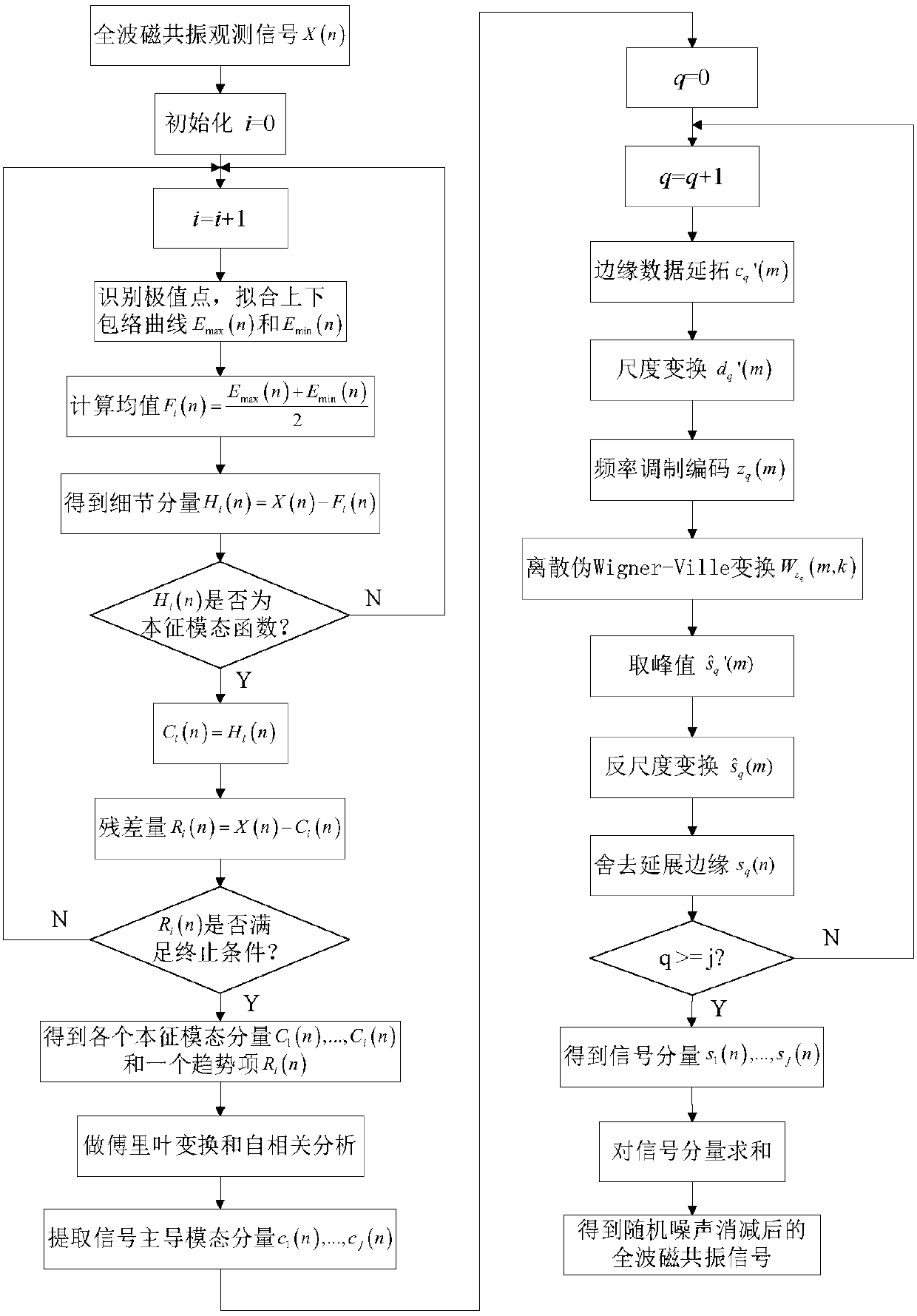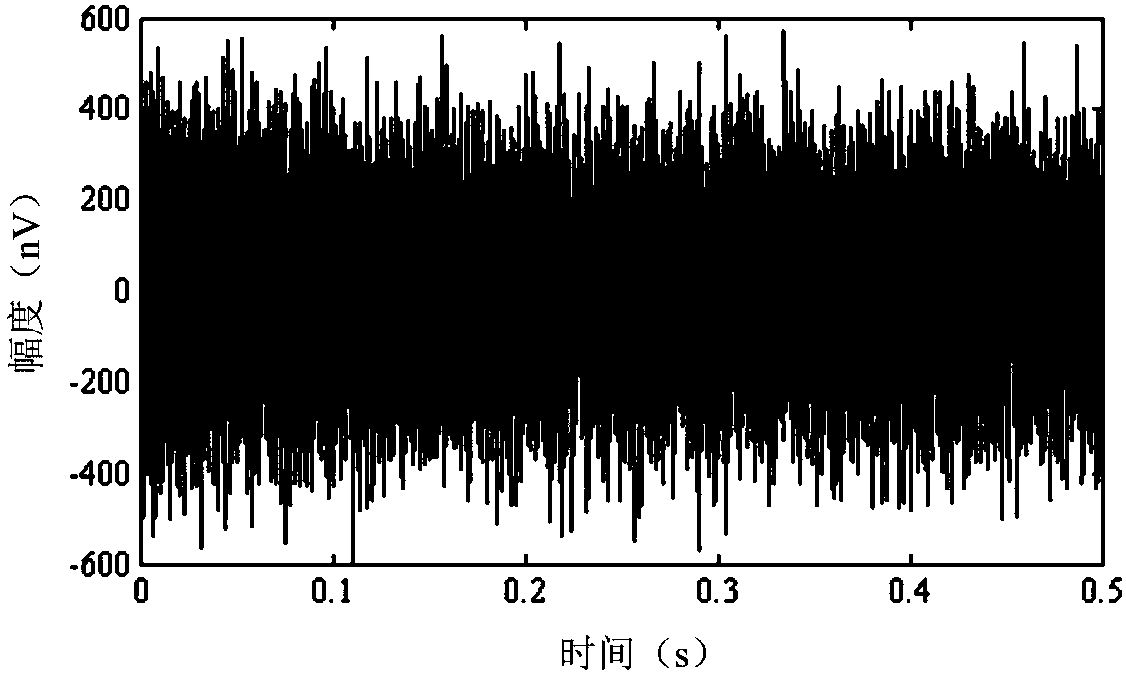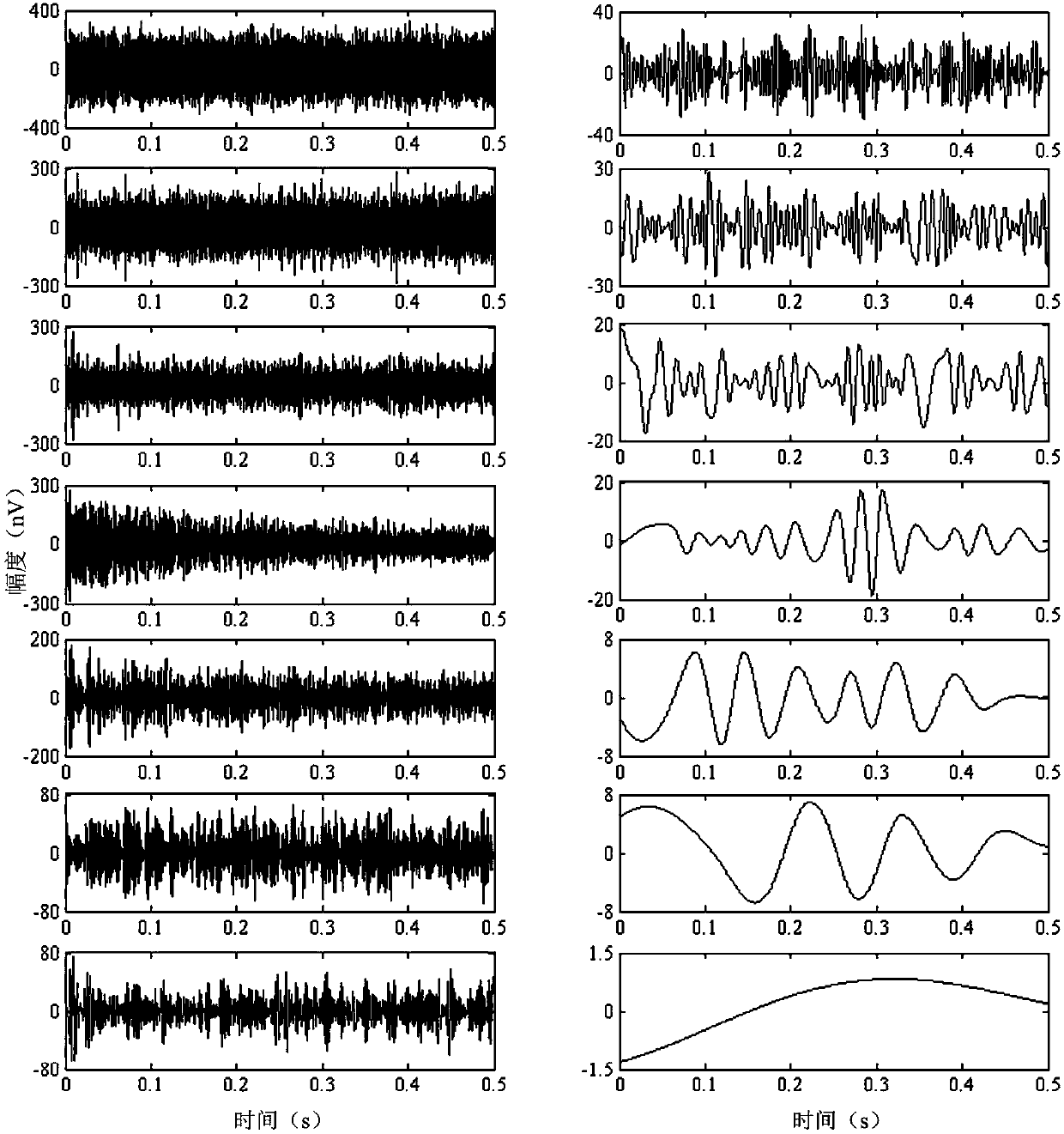Full-wave magnetic resonance signal random noise abatement method combining EMD and TFPF algorithms
A magnetic resonance signal and random noise technology, which is applied in the fields of electronic magnetic resonance/nuclear magnetic resonance detection, electric/magnetic exploration, sound wave re-radiation, etc. Reduce work efficiency and other issues, achieve the effect of great practical application value, no loss of signal components, and few constraints
- Summary
- Abstract
- Description
- Claims
- Application Information
AI Technical Summary
Problems solved by technology
Method used
Image
Examples
Embodiment Construction
[0055] Below in conjunction with accompanying drawing and embodiment the present invention is described in further detail:
[0056] A method for reducing random noise of full-wave magnetic resonance signals by combining EMD and TFPF algorithms, comprising the following steps:
[0057] a. Perform EMD decomposition on the full-wave magnetic resonance observation signal X(n) collected by the nuclear magnetic resonance groundwater detector (n is a discrete sample point), and decompose i different eigenmode components C from high frequency to low frequency 1 (n),...,C i (n) and a trend term R i (n), X(n)=C 1 (n)+L+C i (n)+R i (n);
[0058] b. For the eigenmode component C 1 (n),...,C i (n) and the trend term R i (n) Carry out Fourier transform and autocorrelation analysis, synthesize Fourier transform results and autocorrelation analysis results to obtain noise-dominated modal components and signal-dominated modal components, and extract signal-dominated modal components c ...
PUM
 Login to View More
Login to View More Abstract
Description
Claims
Application Information
 Login to View More
Login to View More - R&D Engineer
- R&D Manager
- IP Professional
- Industry Leading Data Capabilities
- Powerful AI technology
- Patent DNA Extraction
Browse by: Latest US Patents, China's latest patents, Technical Efficacy Thesaurus, Application Domain, Technology Topic, Popular Technical Reports.
© 2024 PatSnap. All rights reserved.Legal|Privacy policy|Modern Slavery Act Transparency Statement|Sitemap|About US| Contact US: help@patsnap.com










